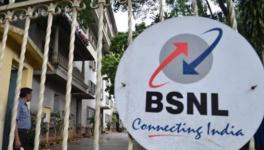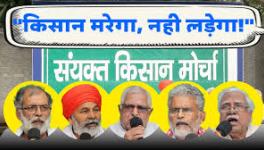NTP 2011: Yesterday's Scam as Policy Today
The brand new National Telecom Policy 2011 (NTP 2011) proposed with a lot of fan fare has the same objective as earlier such policies – NTP 1994 and NTP 1999 – how to create new scams or justify existing ones.Sibal, while paying lip service to various other policy objectives such as teledensity, self-reliance, etc., makes clear that this policy is primarily to help “.. ensuring continued viability of (private) service providers in a competitive environment.” Too many licenses have been given with not enough spectrum and not enough money for putting in infrastructure. Now the challenge is how to allow the existing license holders to either sell their licenses or provide services without building the necessary infrastructure.
If NTP 1999 was to help the telecom companies to escape from the committed license fees running into thousands of crores to a revenue sharing regime, NTP 2011 game-plan appears to be designed to help the existing licensees to escape from their roll-out obligations for building a network and allow them to sell their licenses acquired at 1/10th the market price.
In Raja's scam, apart from his infamous first-come first-served policy, there are two other steps that he took. One was to change the mergers and acquisitions guidelines, allowing the parties to sell equity to others, the second forcing BSNL to provide their infrastructure to these new operators for providing services through intra circle roaming. As a consequence, these new licensees could start getting subscribers and providing services without rolling out their network. That is why by making only marginal investments, they could still claim that they had started services, making their market value much higher. Without this, Unitech and Swan may not have been able to sell their shares to Telenor and Etalisat at 10 times what they had paid for the license fees.
Raja's scam ridden Department of Telecom (DoT) regime had amended the licenses of the operators in June 2008 and permitted “intra circle” roaming. What it meant tis hat an operator could provide services in its service area even though it had not rolled out its network. Earlier, roaming was always for areas where the operator did not have a license and therefore his subscriber was forced to “roam” on a network provided by others. Along with this modifications, Raja also forced BSNL to provide such roaming facilities to companies who had received licenses in January 2008 so that they could start providing services, virtually without any further capital investments.
TRAI had objected to DoT's amendment of the licenses on various counts. The Chairman TRAI had written in July, 2008 pointing out that as per the TRAI Act, such an amendment to the license could have been issued only after seeking recommendations from TRAI. He had also pointed out that:
I. Such intra-circle roaming should not be considered as a substitute for roll-out obligations specified in the license
II. It distorts various spectrum issues including quality of service, imbalance in spectrum utilisation
III. Has implications for additional spectrum entitlements,
IV. It has security issues with subscribers not being easy to track as they could shift in and out of two networks continuously
One of the reasons that BSNL from a company having huge reserves to one that today is making losses is that it has been used by the Government to allow its competitors to piggy-back on BSNL.
In 3G services, some of the telecom majors – Vodafone, Airtel and IDEA -- have now extended intra-circle roaming to provide services in areas where they do not even have licenses. Step by step we have reached a regime where companies are now providing services without infrastructure or even licenses.
If we look at the current bunch of license holders, particularly the ones who are party to Raja's 2G scam, TRAI is on record that their licenses should be cancelled as they have all reneged on the roll-out obligations. DoT has been dragging its feet over this. Some notices have been issued and noises are being made. But the intent is clear – how to allow such parties to sell their licenses rather than cancelling them.
The Draft NTP 2011 is the policy framework is designed to make all such violations legal. In any case, this has been UPA policies in telecom. When companies such as Vodafone violated the 49% FDI cap, the then Finance Minister P.Chaidambaram increased the cap to 74%, arguing that since the cap is being violated, there is no point in having the cap. Now Kapil Sibal seems to be following in his foot-steps.
The key pronouncement in Draft NTP 2011 is the separation of physical infrastructure from services. What it means is that the network – cables, towers, cells etc. – can belong to one party while the other party provides services – a kind of providing the roads while other drive the cars.
Theoretically, separation of physical infrastructure from services is feasible. However, it brings a host of new issues – both technological as well as legal. The problem here is that if it is considered feasible to separate services from infrastructure, should we not then consider building a common infrastructure very much in the way that highways are? Without a common physical infrastructure, what would be the purpose of this separation?
The Draft NTP 2011 appears to view that the existing infrastructure can be separated – Vodafone's physical infrastructural will become one company while its services become another one. If fragmentation of the market is the problem and consolidation is the goal, then it appears such a separation will only fragment the market even further.
As it happens with all UPA policy, the explanation of the policy is not what is stated in the policy document. The target appears to be the huge cable network that BSNL owns. If this can be separated from BSNL, then it can become the common infrastructure of a number of private companies who can provide services without building any infrastructure. We are back to where we started from – the entire thrust of the policy is how to help existing license holders provide services without investing money. No capital expenditure, no roll-out of network, mint money by acquiring subscribers without pain and then sell licenses. This is what Sibal's policy claims as “exit” policy for companies.
Draft NTP 2011 has some lip service about indigenous manufacture. In concrete terms, all that it promises is that if everything is equal, then domestic manufacture will have a preference. Unfortunately, the issue in domestic manufacture is not about final prices of equipment but about the current excise and customs regime, basic infrastructure for manufacture and a host of other issues. If we want to promote manufacture, the only way to do so is to look at the gamut of issues and not make a token gesture of a kind that has no value.
Currently, the excise and customs regime is one where importing handsets and equipment enjoys duty preference. We have an inverted duty structure where raw materials and intermediate goods have a higher duty than finished goods. What it means is that it is cheaper to manufacture in China and sell in India. For equipment manufacturing, China had a clear policy. It forced the major equipment companies to transfer technology to Chinese companies in lieu major orders – it utilised its market power to acquire technology. Compare this to what we have done – in spite of having the second biggest telecom market in the world, we have wound up even the manufacturing that we had earlier. C-DOT and ITI are no longer are players for either equipment or technology.
Without indigenous technology, the current telecom regime is making buying telecom equipment impossible for BSNL and MTNL. DoT insists that all suppliers of equipment must also give source code which no international supplier is willing to give. The only exception are Chinese equipment suppliers. And here is the catch – the Home Ministry is now insisting that for security reasons BSNL should not buy Chinese equipment. If we take both the ministries together and look at the domestic manufacturing scenario, it makes sense if we only see the Ministries working as a tag team to destroy BSNL. Are we to believe that the Ministers are all naïve about the telecom sector, specially when the two concerned ministers have been deeply involved in telecom litigation in the past on behalf of the major telecom players? Or is there some other interest in sabotaging BSNL by denying them all expansion?
The telecom policies in this country have more to do with telecom scams than a clear enunciation of the country’s requirements. The 1994 National Telecom Policy lead to Sukhram and his case by case policy, and discovery of suitcases with crores in his bedroom. The 1999 policy was wholesale escape for companies who had secured licenses from paying license fees. The current 2011 policy is to help companies who have secured licenses at throw away prices to sell them at huge profits. A scam today is the policy tomorrow: this appears to be the brief of successive ministers in the telecom sector.
Image Courtesy: flickr.com
Get the latest reports & analysis with people's perspective on Protests, movements & deep analytical videos, discussions of the current affairs in your Telegram app. Subscribe to NewsClick's Telegram channel & get Real-Time updates on stories, as they get published on our website.























